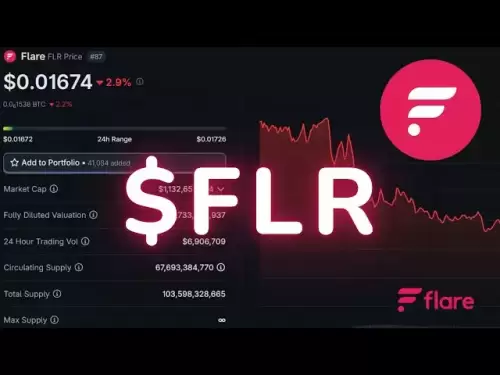-
 Bitcoin
Bitcoin $108,017.2353
-0.81% -
 Ethereum
Ethereum $2,512.4118
-1.58% -
 Tether USDt
Tether USDt $1.0002
-0.03% -
 XRP
XRP $2.2174
-1.03% -
 BNB
BNB $654.8304
-0.79% -
 Solana
Solana $147.9384
-1.76% -
 USDC
USDC $1.0000
-0.01% -
 TRON
TRON $0.2841
-0.76% -
 Dogecoin
Dogecoin $0.1636
-2.09% -
 Cardano
Cardano $0.5726
-1.72% -
 Hyperliquid
Hyperliquid $39.1934
1.09% -
 Sui
Sui $2.9091
-0.59% -
 Bitcoin Cash
Bitcoin Cash $482.1305
0.00% -
 Chainlink
Chainlink $13.1729
-1.54% -
 UNUS SED LEO
UNUS SED LEO $9.0243
-0.18% -
 Avalanche
Avalanche $17.8018
-1.90% -
 Stellar
Stellar $0.2363
-1.69% -
 Toncoin
Toncoin $2.7388
-3.03% -
 Shiba Inu
Shiba Inu $0.0...01141
-1.71% -
 Litecoin
Litecoin $86.3646
-1.98% -
 Hedera
Hedera $0.1546
-0.80% -
 Monero
Monero $311.8554
-1.96% -
 Dai
Dai $1.0000
-0.01% -
 Polkadot
Polkadot $3.3473
-2.69% -
 Ethena USDe
Ethena USDe $1.0001
-0.01% -
 Bitget Token
Bitget Token $4.3982
-1.56% -
 Uniswap
Uniswap $6.9541
-5.35% -
 Aave
Aave $271.7716
0.96% -
 Pepe
Pepe $0.0...09662
-1.44% -
 Pi
Pi $0.4609
-4.93%
Why does AVAX withdrawal require multiple confirmations? How to speed up the withdrawal of coins?
Multiple confirmations are needed for AVAX withdrawals to ensure transaction security; increasing fees can speed up the process on the Avalanche network.
Apr 28, 2025 at 11:56 pm
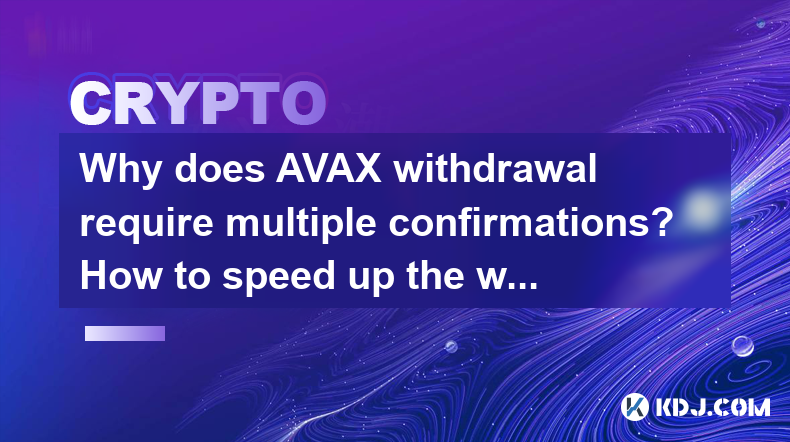
Introduction to AVAX Withdrawal
When you decide to withdraw AVAX, the native cryptocurrency of the Avalanche blockchain, from an exchange or a wallet, you might notice that the transaction requires multiple confirmations before it is considered complete. This process is essential for the security and integrity of the blockchain. Understanding why multiple confirmations are necessary and learning how to speed up the withdrawal of coins can help you manage your transactions more efficiently.
Why Multiple Confirmations Are Necessary
The Avalanche network, like other blockchain networks, relies on a consensus mechanism to validate transactions. Multiple confirmations are a critical part of this process. When you initiate a withdrawal, the transaction is broadcast to the network and added to a block. This block is then verified by multiple nodes on the network to ensure that the transaction is valid and that no double-spending has occurred.
The reason for requiring multiple confirmations is to increase the confidence that the transaction is irreversible. Each confirmation adds another layer of security, making it exponentially more difficult for a malicious actor to alter the transaction. On the Avalanche network, transactions typically require a certain number of confirmations before they are considered final, which is usually set to 1-3 confirmations for most exchanges and wallets.
How the Confirmation Process Works on Avalanche
On the Avalanche network, the confirmation process is faster compared to other blockchains like Bitcoin or Ethereum. Avalanche uses a unique consensus protocol called Avalanche consensus, which allows for rapid confirmation times. When a transaction is submitted, it is validated by a subset of nodes, and if a sufficient number of nodes agree on the transaction's validity, it is confirmed.
The number of confirmations required can vary depending on the specific wallet or exchange you are using. Some platforms might require just one confirmation for small transactions, while others might require three or more for larger amounts. This variability is a balance between security and speed, with more confirmations providing higher security at the cost of longer wait times.
Factors Affecting Withdrawal Speed
Several factors can influence the speed at which your AVAX withdrawal is processed. The most significant factor is the network congestion. If the Avalanche network is experiencing high traffic, transactions might take longer to be confirmed. Additionally, the fee you set for the transaction can impact its speed. Higher fees incentivize miners to prioritize your transaction, potentially leading to faster confirmations.
The specific policies of the exchange or wallet you are using can also affect withdrawal speed. Some platforms might have internal processes that add additional delays, such as manual review for large transactions or security checks. Understanding these factors can help you better manage your expectations and plan your withdrawals accordingly.
How to Speed Up the Withdrawal of AVAX
If you need to speed up the withdrawal of your AVAX, there are several strategies you can employ. Here are some detailed steps to help you expedite the process:
Increase the Transaction Fee: One of the most effective ways to speed up a transaction is to increase the fee. Higher fees incentivize miners to prioritize your transaction. When initiating a withdrawal, check if your wallet or exchange allows you to set a custom fee. If possible, set a higher fee to expedite the process.
Choose the Right Time: Network congestion can significantly impact transaction speed. Try to initiate your withdrawal during off-peak hours when the network is less congested. This might mean avoiding times when major cryptocurrency events or news are likely to increase trading activity.
Use a Reliable Wallet or Exchange: Some wallets and exchanges are more efficient than others in processing withdrawals. Research and choose platforms known for their fast transaction times. Platforms that support Avalanche's native wallet, such as Core, might offer faster withdrawals compared to those that do not.
Check for Pending Transactions: If you have multiple pending transactions, they might be competing with each other for confirmation. In some cases, you can cancel or replace a pending transaction with a higher fee. Check your wallet or exchange's documentation to see if this option is available.
Contact Customer Support: If your withdrawal is taking longer than expected, reaching out to the customer support of your wallet or exchange can provide additional insights. They might be able to expedite your transaction or provide information on any issues affecting withdrawal times.
Common Issues and Troubleshooting
Sometimes, despite your best efforts, you might encounter issues with your AVAX withdrawal. Common problems include stuck transactions, incorrect fee settings, or network issues. Here are some troubleshooting steps you can take:
Check Transaction Status: Use a blockchain explorer like Snowtrace to check the status of your transaction. If it is stuck, you might need to take action to expedite or replace it.
Adjust Fees: If your transaction is stuck due to a low fee, you might be able to replace it with a higher fee transaction. This process, known as a "replace-by-fee" (RBF), is supported by some wallets and can help get your transaction confirmed faster.
Verify Network Status: Check the status of the Avalanche network to see if there are any ongoing issues that might be affecting transaction times. Websites like Avalanche's official status page can provide real-time updates on network performance.
Review Wallet Settings: Ensure that your wallet is configured correctly. Incorrect settings, such as using the wrong network or having outdated software, can cause delays in transaction processing.
Frequently Asked Questions
Q: Can I withdraw AVAX to any wallet?
A: You can withdraw AVAX to any wallet that supports the Avalanche network. Ensure that the wallet address you provide is compatible with AVAX and that you double-check the address to avoid sending your funds to the wrong place.
Q: What happens if my AVAX withdrawal gets stuck?
A: If your AVAX withdrawal gets stuck, you can try to increase the transaction fee through a replace-by-fee (RBF) transaction if supported by your wallet. Alternatively, contact the customer support of your exchange or wallet for assistance.
Q: How long does it typically take to withdraw AVAX?
A: The time it takes to withdraw AVAX can vary based on network congestion and the policies of the wallet or exchange. Typically, withdrawals can be processed within minutes to a few hours, depending on the number of confirmations required.
Q: Is it safe to increase the transaction fee to speed up my AVAX withdrawal?
A: Yes, increasing the transaction fee is generally safe and can help speed up your AVAX withdrawal. However, ensure that you are using a reputable wallet or exchange and that you understand the fee structure to avoid overpaying.
Disclaimer:info@kdj.com
The information provided is not trading advice. kdj.com does not assume any responsibility for any investments made based on the information provided in this article. Cryptocurrencies are highly volatile and it is highly recommended that you invest with caution after thorough research!
If you believe that the content used on this website infringes your copyright, please contact us immediately (info@kdj.com) and we will delete it promptly.
- Cryptos in July 2025: Massive Gains or Just Hype?
- 2025-07-05 20:30:13
- Pepe's EVM Layer 2 Meme Coin Mania: What's the Hype?
- 2025-07-05 20:50:12
- Shiba Inu, Dogecoin, and the Crypto Skyrocket: What's Making These Memes Soar?
- 2025-07-05 21:10:12
- Tokenized Stocks: Robinhood, Gemini, and the NYSE Threat
- 2025-07-05 21:10:12
- Altcoin Adventures: Navigating the Pepe Fork Frenzy and Solana's Summer Swings
- 2025-07-05 21:15:12
- Hong Kong's Tokenised Bond Leap: Zero Stamp Duty Sparks Web3 Ambitions
- 2025-07-05 20:30:13
Related knowledge
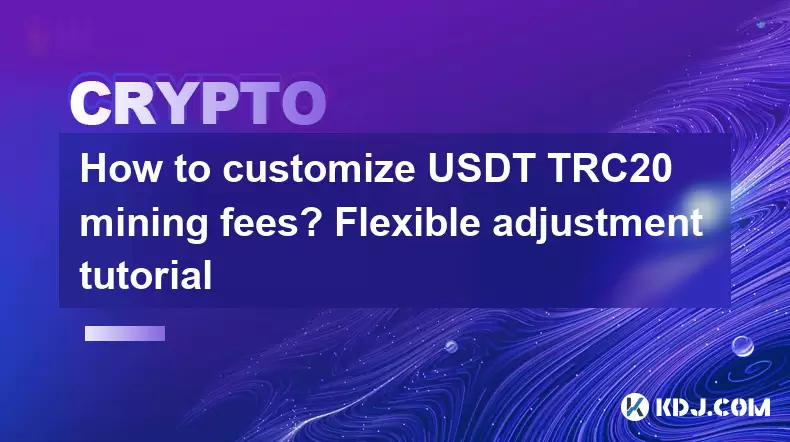
How to customize USDT TRC20 mining fees? Flexible adjustment tutorial
Jun 13,2025 at 01:42am
Understanding USDT TRC20 Mining FeesMining fees on the TRON (TRC20) network are essential for processing transactions. Unlike Bitcoin or Ethereum, where miners directly validate transactions, TRON uses a delegated proof-of-stake (DPoS) mechanism. However, users still need to pay bandwidth and energy fees, which are collectively referred to as 'mining fe...
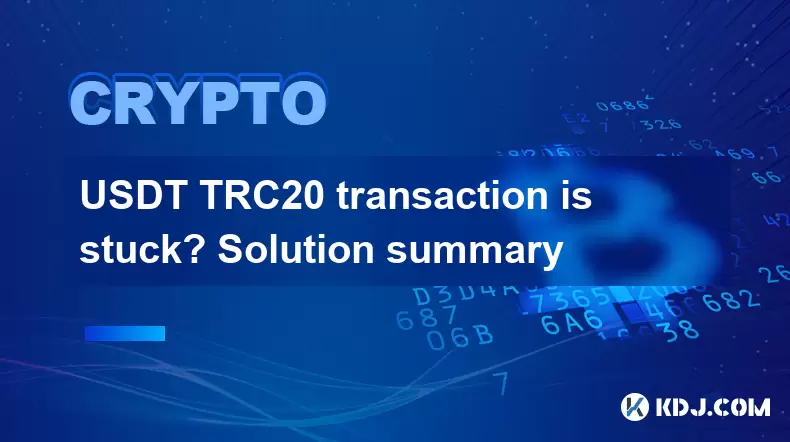
USDT TRC20 transaction is stuck? Solution summary
Jun 14,2025 at 11:15pm
Understanding USDT TRC20 TransactionsWhen users mention that a USDT TRC20 transaction is stuck, they typically refer to a situation where the transfer of Tether (USDT) on the TRON blockchain has not been confirmed for an extended period. This issue may arise due to various reasons such as network congestion, insufficient transaction fees, or wallet-rela...
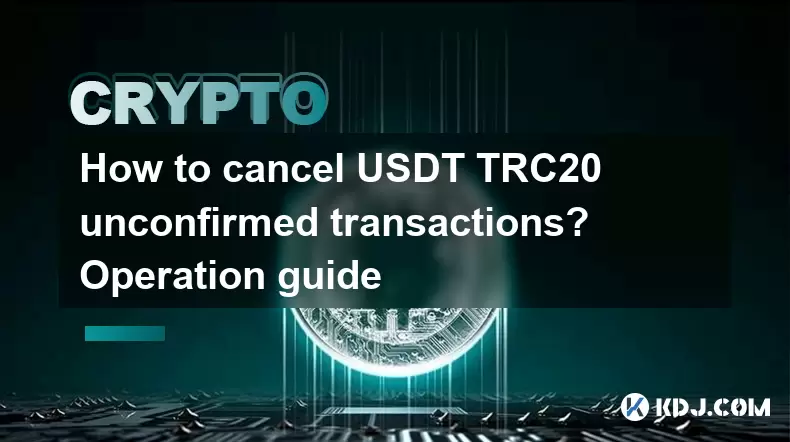
How to cancel USDT TRC20 unconfirmed transactions? Operation guide
Jun 13,2025 at 11:01pm
Understanding USDT TRC20 Unconfirmed TransactionsWhen dealing with USDT TRC20 transactions, it’s crucial to understand what an unconfirmed transaction means. An unconfirmed transaction is one that has been broadcasted to the blockchain network but hasn’t yet been included in a block. This typically occurs due to low transaction fees or network congestio...
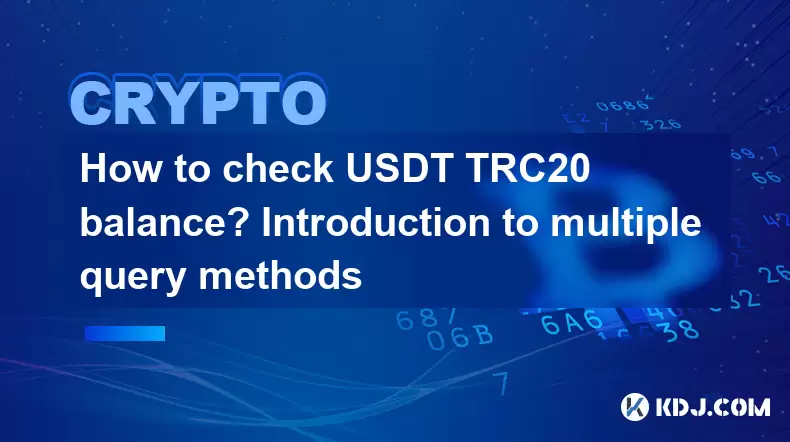
How to check USDT TRC20 balance? Introduction to multiple query methods
Jun 21,2025 at 02:42am
Understanding USDT TRC20 and Its ImportanceUSDT (Tether) is one of the most widely used stablecoins in the cryptocurrency market. It exists on multiple blockchain networks, including TRC20, which operates on the Tron (TRX) network. Checking your USDT TRC20 balance accurately is crucial for users who hold or transact with this asset. Whether you're sendi...
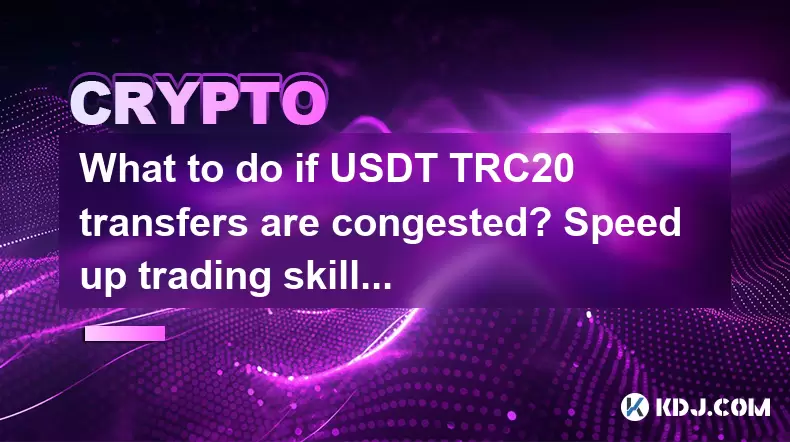
What to do if USDT TRC20 transfers are congested? Speed up trading skills
Jun 13,2025 at 09:56am
Understanding USDT TRC20 Transfer CongestionWhen transferring USDT TRC20, users may occasionally experience delays or congestion. This typically occurs due to network overload on the TRON blockchain, which hosts the TRC20 version of Tether. Unlike the ERC20 variant (which runs on Ethereum), TRC20 transactions are generally faster and cheaper, but during...
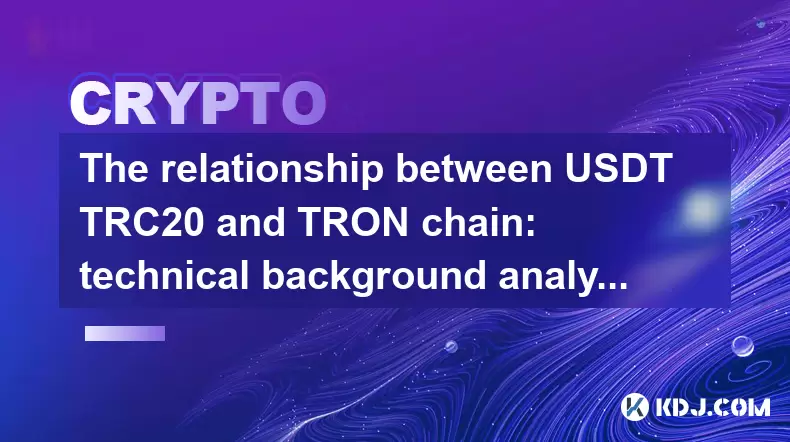
The relationship between USDT TRC20 and TRON chain: technical background analysis
Jun 12,2025 at 01:28pm
What is USDT TRC20?USDT TRC20 refers to the Tether (USDT) token issued on the TRON blockchain using the TRC-20 standard. Unlike the more commonly known ERC-20 version of USDT (which runs on Ethereum), the TRC-20 variant leverages the TRON network's infrastructure for faster and cheaper transactions. The emergence of this version came as part of Tether’s...

How to customize USDT TRC20 mining fees? Flexible adjustment tutorial
Jun 13,2025 at 01:42am
Understanding USDT TRC20 Mining FeesMining fees on the TRON (TRC20) network are essential for processing transactions. Unlike Bitcoin or Ethereum, where miners directly validate transactions, TRON uses a delegated proof-of-stake (DPoS) mechanism. However, users still need to pay bandwidth and energy fees, which are collectively referred to as 'mining fe...

USDT TRC20 transaction is stuck? Solution summary
Jun 14,2025 at 11:15pm
Understanding USDT TRC20 TransactionsWhen users mention that a USDT TRC20 transaction is stuck, they typically refer to a situation where the transfer of Tether (USDT) on the TRON blockchain has not been confirmed for an extended period. This issue may arise due to various reasons such as network congestion, insufficient transaction fees, or wallet-rela...

How to cancel USDT TRC20 unconfirmed transactions? Operation guide
Jun 13,2025 at 11:01pm
Understanding USDT TRC20 Unconfirmed TransactionsWhen dealing with USDT TRC20 transactions, it’s crucial to understand what an unconfirmed transaction means. An unconfirmed transaction is one that has been broadcasted to the blockchain network but hasn’t yet been included in a block. This typically occurs due to low transaction fees or network congestio...

How to check USDT TRC20 balance? Introduction to multiple query methods
Jun 21,2025 at 02:42am
Understanding USDT TRC20 and Its ImportanceUSDT (Tether) is one of the most widely used stablecoins in the cryptocurrency market. It exists on multiple blockchain networks, including TRC20, which operates on the Tron (TRX) network. Checking your USDT TRC20 balance accurately is crucial for users who hold or transact with this asset. Whether you're sendi...

What to do if USDT TRC20 transfers are congested? Speed up trading skills
Jun 13,2025 at 09:56am
Understanding USDT TRC20 Transfer CongestionWhen transferring USDT TRC20, users may occasionally experience delays or congestion. This typically occurs due to network overload on the TRON blockchain, which hosts the TRC20 version of Tether. Unlike the ERC20 variant (which runs on Ethereum), TRC20 transactions are generally faster and cheaper, but during...

The relationship between USDT TRC20 and TRON chain: technical background analysis
Jun 12,2025 at 01:28pm
What is USDT TRC20?USDT TRC20 refers to the Tether (USDT) token issued on the TRON blockchain using the TRC-20 standard. Unlike the more commonly known ERC-20 version of USDT (which runs on Ethereum), the TRC-20 variant leverages the TRON network's infrastructure for faster and cheaper transactions. The emergence of this version came as part of Tether’s...
See all articles























